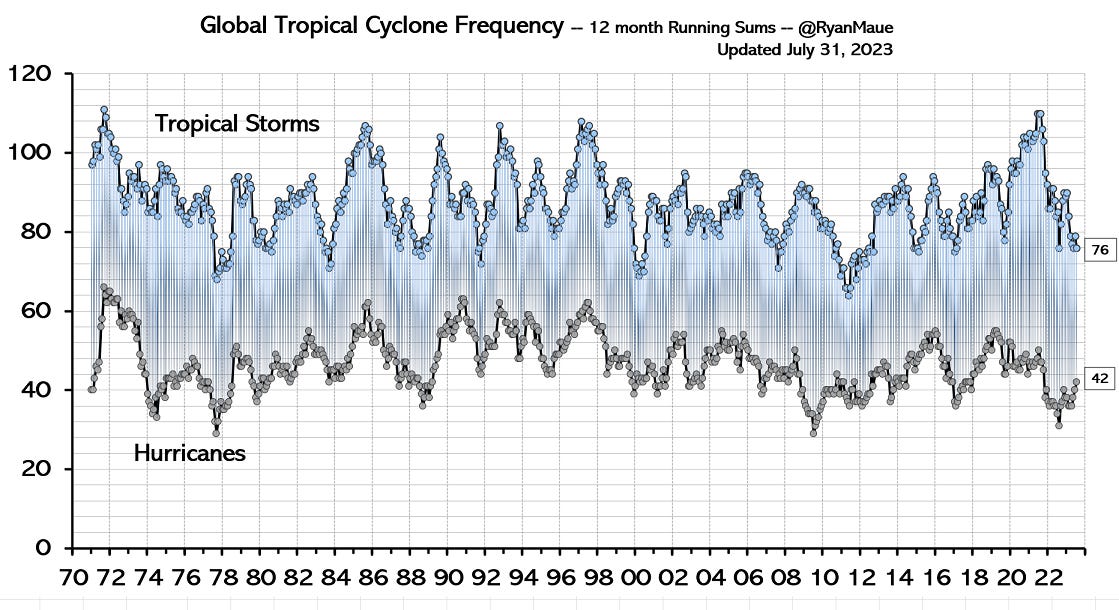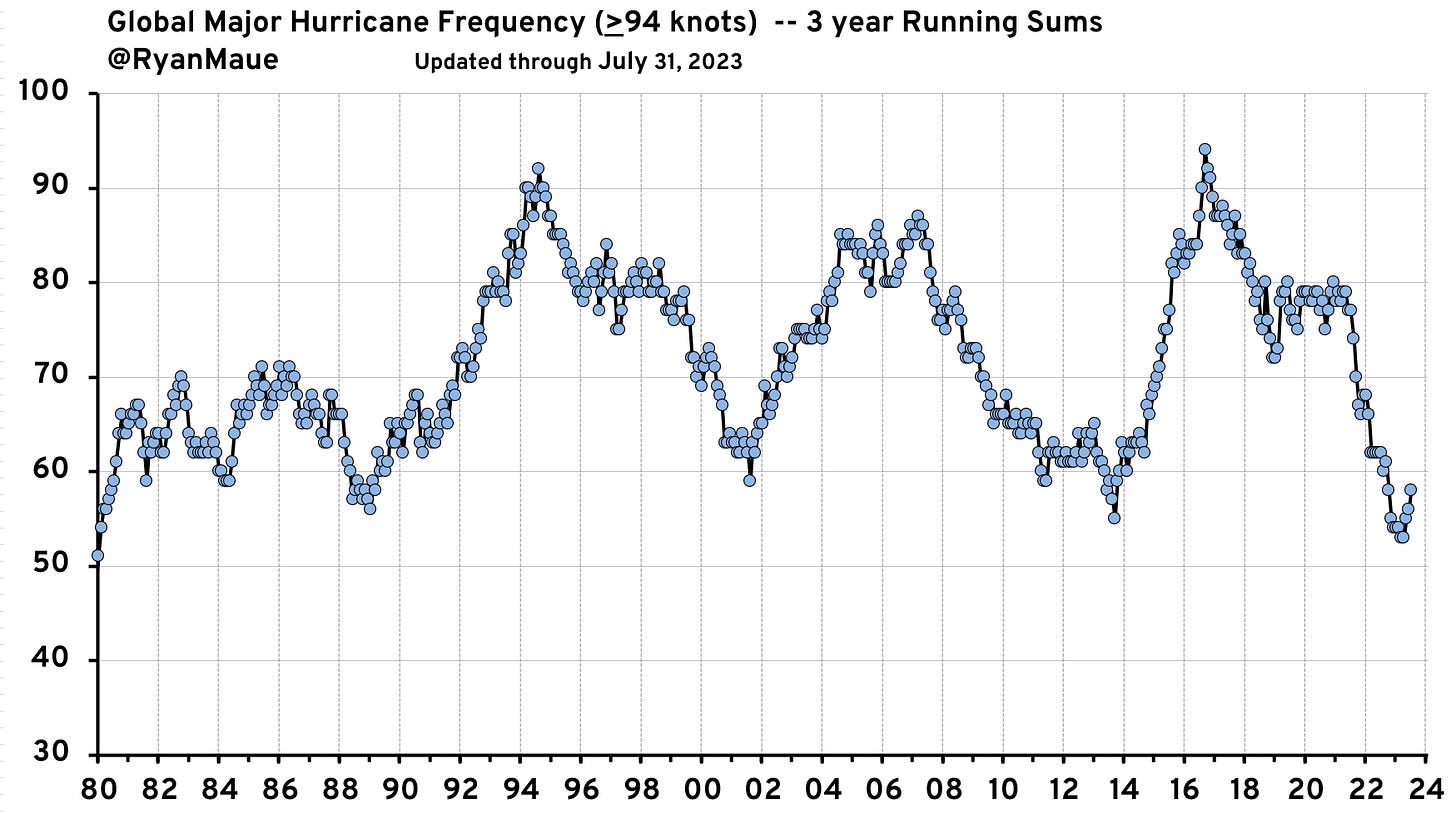Hurricanes and Climate Change
Around the globe, 80-100 tropical storms are observed every year unevenly distributed across the Indian, Pacific, and Atlantic oceans. About half go on to reach hurricane strength and a smaller percentage, about 1/4 become major hurricanes. The generic term tropical cyclone can be used to describe tropical storms, hurricanes and typhoons. While most tropical cyclones complete their lifecycle without impacting land, there are many each year that cause catastrophic damage and loss of life to coastal nations including the United States.
While this statement focuses on the Atlantic Ocean basin, much of the information can be applied to the other ocean basins in a general sense. We present the most up-to-date information on how climate change is expected to impact hurricanes in the future. There are two complementary lines of evidence used to diagnose climate change effects upon hurricanes including (1) historical records of observed activity and (2) computer modeling. Many scientists have dedicated their careers to improve the understanding of hurricanes and published countless papers that help inform the scientific consensus: From the NOAA GFDL website (Link) : "In summary, it is premature to conclude with high confidence that increasing atmospheric greenhouse gas concentrations from human activities have had a detectable impact on Atlantic basin hurricane activity, although increasing greenhouse gases are strongly linked to global warming... Human activities may have already caused other changes in tropical cyclone activity that are not yet detectable due to the small magnitude of these changes compared to estimated natural variability, or due to observational limitations."
Regardless of the scientific ability to conclude confidently in every impact of climate change on hurricanes, they will continue to occur and devastate rapidly growing coastal regions. The only proven and practical way to prevent loss of life and property damage is to prepare ahead with improved building codes and maintain a high level of vigilance and resilience in the face of natural disasters. This includes more accurate intensity and track forecasting through advanced numerical weather prediction or weather models.
Note that lack of evidence does NOT mean absence of evidence. It means we currently have incomplete knowledge or inadequate methods and/or observations. We can still have medium to high confidence in an expected outcome based upon fundamental understanding of physics and fluids.






